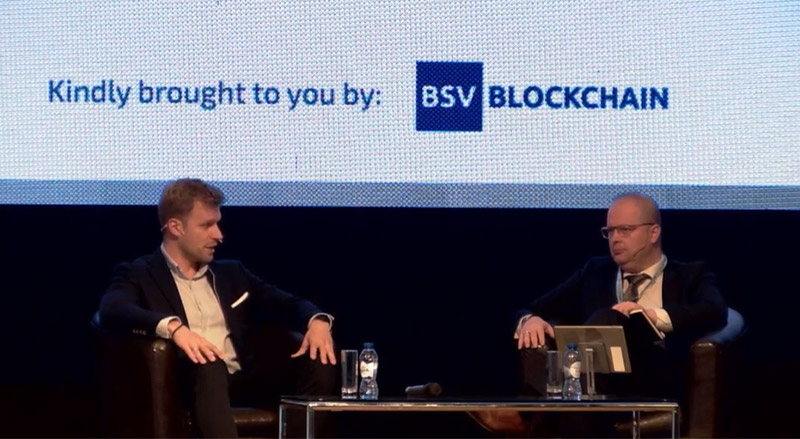Can lost or stolen digital assets be reclaimed within the bounds of the law? What is the procedure for such a recovery, and what legal responsibilities and rights do the various involved parties have?
These questions were tackled in a recent fireside chat at the recent Blockchain for Europe Summit. The panel delved into the notion of digital asset recovery, dissecting its impact on individuals, businesses, and government entities, and the integration of the BSV blockchain.
The fireside chat was hosted by Dimitrios Psarrakis (Co-Founder and President of the Brussels Council for Innovation) and included Marcin Zarakowski (Executive Committee Member at the BSV Association).
A misconception about digital assets and the law
Psarrakis began the discussion by noting that crypto-assets have always been considered ‘risky’ by virtue of the fact that losing your keys to your wallet would effectively lock you out of your finances. Similarly, if a bad actor fraudulently obtained access to your keys they could effectively take all of your assets, leaving you with no recourse.
Zarakowski said that one of the biggest myths in blockchain is ‘not your keys, not your coins’. ‘There is nothing specific about digital assets that put them outside of the existing regulatory framework – especially property laws. If you lose the keys to your car, and I find them, that doesn’t make you the owner of your car.’
Zarakowski noted that laws apply to digital assets in the same way, despite repeated attempts to create a separate regime outside of the law. He added that as long as this push continues, digital assets will never see mass adoption because governments, businesses, and consumers will be concerned about the risks involved.
‘It is possible to recover assets because the laws provide for this. The same laws apply to recovering lost and stolen physical assets.’
While this is fine in theory, Zarakowski noted that people who have had their keys lost or stolen typically have limited avenues available to recover their lost digital assets. This includes questions around what courts to use, which jurisdiction applies and whether you can then get an exchange to agree and follow the judgement.
How Digital Asset Recovery works
To address these issues, the BSV Association has developed a mechanism called Digital Asset Recovery. This enables assets on-chain to be frozen or recovered if they are lost, stolen or if they require ownership of transfer.
This is done simply by taking existing legal frameworks and applying them to blockchain technology in four steps:
- A plaintiff initiates a legal process to establish the ownership of coins they deem to be rightfully theirs.
- The plaintiff obtains a freeze court order or document of equivalent legal force and commissions a notary who can broadcast it to the miners through the Blacklist Manager tool.
- The notary acts analogously to a bailiff for conventional assets, translating legal documents into a machine-readable format and broadcasting it to miners.
- Miners receive the broadcast from a notary delivered to their Blacklist Manager, freezing the coins in question on the same consensus basis that the network uses now.
Use-case expected in 2024
Zarakowski said that the first official test case of the Digital Asset Recovery toolset on the BSV blockchain is expected in Q1 2024. ‘Once we demonstrate that this actually works, it will no longer be possible for nodes or anybody in space to say that it is not possible. We will demonstrate that it is possible.’
He added that while the most obvious use case for the Digital Asset Recovery toolset is recovering lost and stolen coins, it could also be used in the case of inheritance claims – where previously coins are lost when a person dies and does not share their keys.
‘It is possible to generate evidence that these specific assets belong to a person. You can now get a court order concerning the estate of a deceased person and there should be a possibility to recover those assets.’
Zarakowski said that he also foresees circumstances where assets need to be frozen because it is not clear who the actual owner is.
